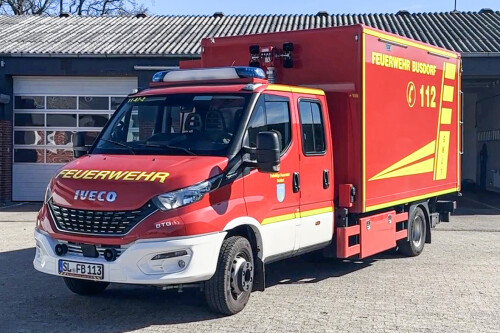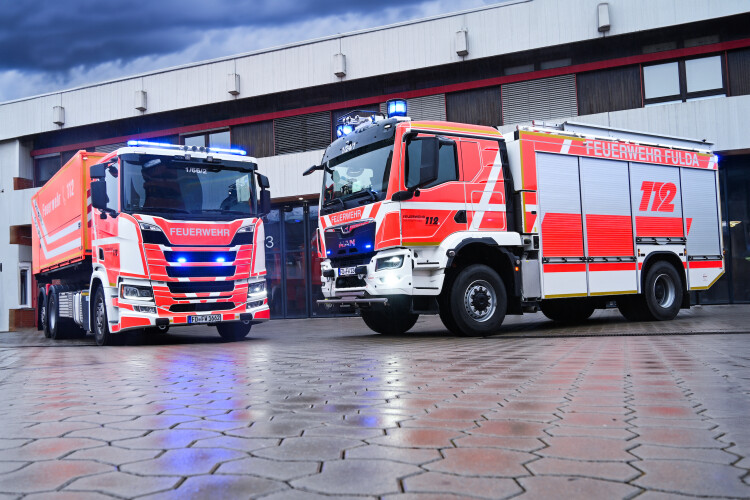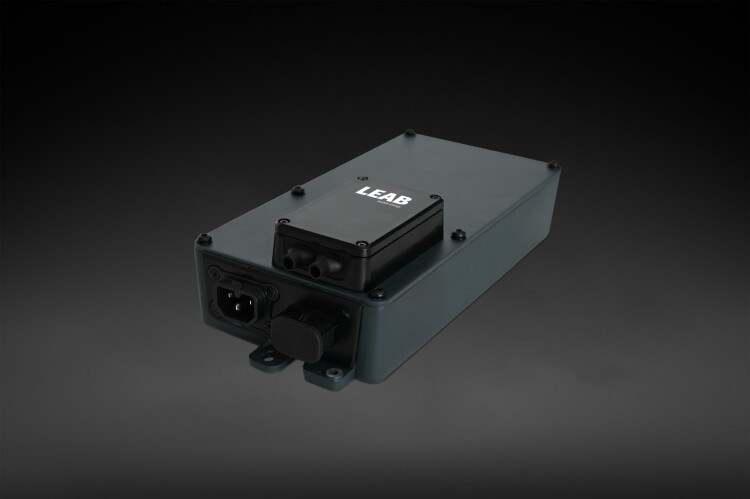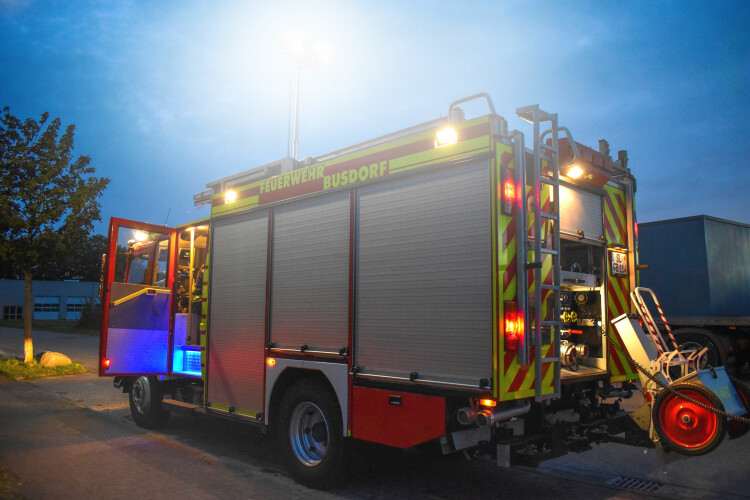
The logistics equipment vehicle (GW-L1) of the Busdorf volunteer fire brigade is always well supplied with power by the LPS II. From 14 to 16 May, you can get a live impression of the vehicle and the installed technology at the RETTMobil 2025.
Whether it's an emergency, major incident or routine deployment: police, the fire brigade and rescue service vehicles must be ready for action at all times, without compromise. The starter battery is at the centre of this. The LPS II can relieve the load on it in a targeted manner and reliably take over the power supply in the vehicle body.
Long idle times with active electrical consumers are not uncommon in the everyday life of emergency services: lighting, communication technology, ambient lighting or chargers for handheld radios run continuously and often in parallel. If all of this is operated via the starter battery, this leads to its rapid discharge and can jeopardise operational capability. Running the engine can stabilise the power supply in the short term, but also causes noise, exhaust fumes and increased wear.
Auxiliary batteries provide relief here, preferably in a complete, independent circuit. The LPS II from LEAB ensures exactly that: as a self-sufficient power supply unit, it takes over the power supply in the vehicle body. At the same time, it protects the starter battery and can even provide starting assistance via the integrated DC/DC connection, for example after long periods of downtime.
It combines battery, charger, 230 V inverter and DC outputs in one compact system. Its capacity can be expanded modularly for complex applications. This is ideal for high loads or long periods of use without an external power source.

The logistics equipment vehicle (GW-L1) of the Busdorf volunteer fire brigade is always well supplied with power by the LPS II. From 14 to 16 May, you can get a live impression of the vehicle and the installed technology at the RETTMobil 2025.
With the LPS II, the engine remains switched off and operational readiness is maintained. This not only reduces noise and exhaust pollution, but also improves the tactical situation: fewer acoustic signatures, less heat radiation, greater concentration at the scene of the operation.
At the same time, the self-sufficient power supply ensures that all systems continue to run stably. From ambient lighting to chargers and communication technology. This means that the required energy is always available when it is critical.
The demands placed on emergency services vehicles are high: maximum availability, absolute reliability and intuitive operation. This is precisely why the LPS II was developed - from practice, for practice.
Are you planning to equip or retrofit vehicles for emergency services? We will be happy to advise you on power supply concepts with the LPS II. Customised, reliable and application-oriented.
Simply contact us directly at the RETTmobil from 14-16 May and see the LPS II in a logistics equipment vehicle (GW-L1) for yourself.
Or arrange an individual consultation appointment on site in Fulda now.

Whether fire brigade, rescue service or disaster control: technology must function reliably in emergency vehicles. Many devices depend on a stable power supply, to which our five favourites make a significant contribution. We present them in detail here.

With the RC9 charger, LEAB is presenting the first representative of the new RC series. The RC series defines state-of-the-art onboard chargers for 12, 24 and 48 V battery voltages in all demanding applications for the emergency services sector.

Modern emergency vehicles require more than just standard charging via the 12 V or 24 V vehicle electrical system. Absolute reliability is particularly important for fire brigades, rescue services or intensively used fleets. A permanently installed 230 V power supply in the vehicle offers a powerful, efficient and safe solution for this.

Modern emergency vehicles are equipped with a variety of electrical systems. The electrical appliances ensure efficient and safe operation, but also challenge the on-board power supply.